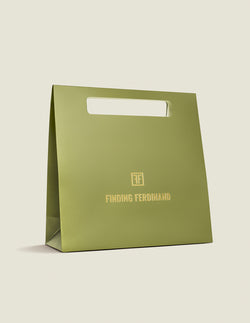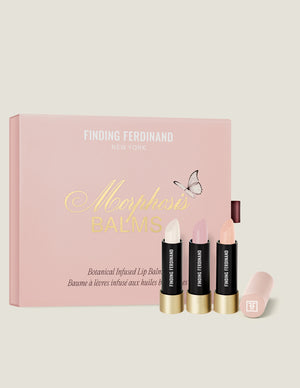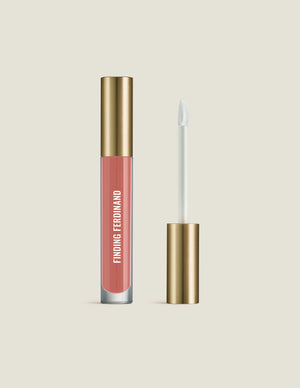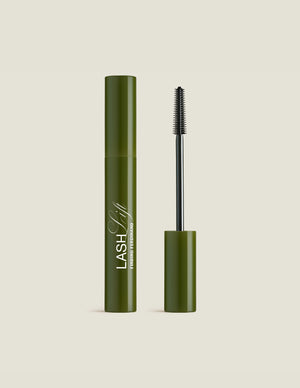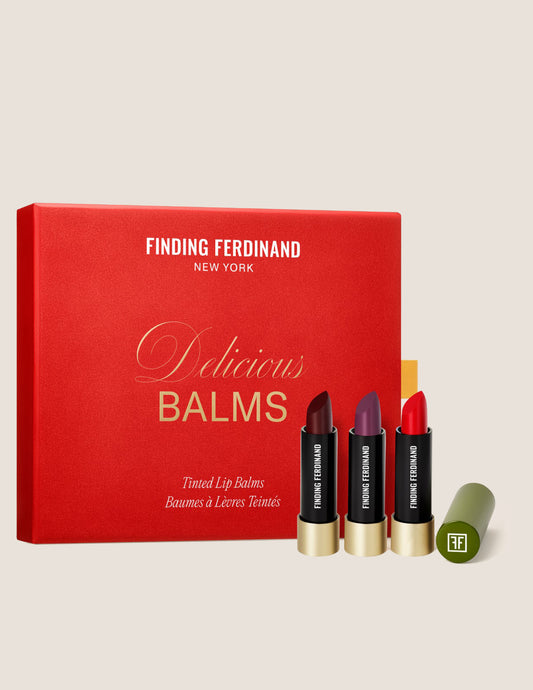If you think makeup is makeup, think again! Not all brands are created equal when it comes to creating beautiful, fun-to-use cosmetics that are safe for your skin. At Finding Ferdinand, we make our products with care… we’re a bit obsessive really. Read on to find out how we create our high-quality, customizable products.
Testing - 1, 2, 3.

The FF Team loves animals. So we make sure we (and the people we work with) never test on monkeys, bunnies, dogs, mice, nada. Instead, we test the products on ourselves. You may have gotten a glimpse of our testing process on our Instagram.
After six months of testing on the team, we ask a focus group to come in to test it for themselves. We listen to their comments and concerns, and when they approve of the products, and only then, do we prep for it to officially go to market.
Responsible Fulfillment
 Nhu, our founder, personally visits our factories to make sure that we’re creating our products responsibly. Before working with a production team, we get visual confirmation that our manufacturers and their employees are working in an environment in line with our standards and ethics and that the factories were always clean and well-maintained. We’ve seen a lot of bad, so we shop around until we find only good.
Nhu, our founder, personally visits our factories to make sure that we’re creating our products responsibly. Before working with a production team, we get visual confirmation that our manufacturers and their employees are working in an environment in line with our standards and ethics and that the factories were always clean and well-maintained. We’ve seen a lot of bad, so we shop around until we find only good.
All-Star Ingredients

Vitamin E (sometimes listed as tocopherol) is loaded with antioxidants, collagen production boosters, and is great for hair, skin, and nails. We use it in our lip products to reduce the signs of wrinkles, heal rough skin, and protect against harmful sun rays and pollution (meaning it’s anti-aging). Our Vitamin E oil is also gluten free! So if you are allergic or sensitive to wheat germ oil, barley, or anything of the kind, we’ve got your back.

Castor Oil is filled with fatty acids that contain antioxidants, anti-inflammatory and healing properties. It’s been used since the ancient times as a remedy for sunburns, dry and chapped skin, and even hair loss. Because of its anti-inflammatory powers, it’s the perfect ingredient to put in our Lip Tints to repair chapped lips.

Coconut Oil is one of the most versatile oils in the world. It can be used as a cooking ingredient, skin and hair moisturizer, teeth whitener, makeup remover, for soothing sore throats, and even as a supplement for various ailments. In our Lip Tints, it helps create a silky smooth base that is both nourishing and hydrating.

Jojoba Oil is a great natural emollient which helps hydrate and soften skin by reducing evaporation. Staying hydrated and retaining moisture is key to healthy skin and lips, and jojoba oil helps with just that! Jojoba oil is actually liquid wax that closely resembles our skin’s natural sebum, so all the benefits that live in our Lip Sticks and Lip Tints are absorbed easily while the wax prevents any of the good stuff from escaping.

Grapeseed Oil is another one of those holy grail oils. Think of all the benefits of a glass of red wine all condensed into drops of oil. (Yes, please!) Grapeseed oil’s load of antioxidants also comes with anti-inflammatory, anti-carcinogenic, antiviral, and antibacterial properties. What does this all mean? It means our lip colors speed skin healing, reduce swelling and dark spots, diminish wrinkles, and rebalance the lips’ natural sebum.

Sesame Oil is packed with antioxidants and minerals, including zinc, an essential mineral that our body needs to maintain strong hair, boost immune systems, and heal wounds. Found in all of our products, sesame oil helps produce collagen, induce skin elasticity, heal skin tears, reduce the look of dark spots, and create a nourishing protective layer against environmental toxins.

Argan Oil is full of Vitamins A and E, which is crucial for cell growth and repair. This golden oil is lightweight and great for nearly all skin types. It rebalances natural oils in our skin while depositing extra nutrients and hydration. It can be used to repair dry hair and skin, prevent razor bumps, restore skin elasticity, and even condition eyelashes and eyebrows. Argan oil makes our Lip Tints smooth and creamy without being too heavy on our lips.

Shea Butter contains Vitamins A and E as well as fatty acids that make it so incredible. The creamy butter is anti-inflammatory, moisturizing, and anti-aging, which makes it perfect to be used on the skin. It’s been used to treat eczema, reduce the look of scars, act as a barrier against harsh rays, and much more. Shea butter helps create the perfect, smooth base for our Lip Tints that nourishes while it glides onto skin.

Kaolin is a powdered clay that's widely used in cosmetics. It’s been known to clear pores, reduce unwanted oil, draw out toxins in our skin, and soften skin overall. It’s the softest cosmetics clay on the market, which helps create a silky and velvety feel. It can be dyed to create any color one could desire, which helps us create all the makeup colors we want.

Silica, which is naturally found in kaolin, helps keep our hair, skin, and nails strong and healthy. The mineral is already naturally present in our bones, skin, and teeth, and it provides a balance to our bodies’ regenerative properties. We use powdered silica as a mattifier as it absorbs any unwanted oils, making our Lip Sticks go from creamy to a comfortable matte.

Mica is another natural mineral that has been used for centuries. It is known for its reflective, glittery properties, which made it a highly popular decorative ingredient. In cosmetics, mica is dyed to create hundreds of sparkly and metallic colors. Our mica is ground to a powder but not too much where it would be dangerous to inhale. Cosmetic glitter is commonly made of small plastic pieces (craft glitter is made of glass or metal!). So sparkle on with mica in our Eyeshadows and Blushes without worrying about glitter scratching your eyes.

Carnauba Wax is derived from the leaves of a Brazilian palm tree, Copernicia cerifera. Waxes help harden and combine all the oils that are put into products, making the product smooth and stable. Carnauba wax helps reduce the stickiness from oils and helps our Lip Sticks glide onto skin easier.

Candelilla Wax, derived from candelilla leaves, is another plant-based wax that is commonly found in cosmetics. Because the candelilla plant is a succulent, it has water-retaining and evaporation-prevention properties. Those properties transfer to products using candelilla wax, making it the perfect protective barrier for all the oils in our Lip Tints.

Malic Acid can be found naturally in fruits and vegetables such as apples, bananas, broccoli, and carrots. In our bodies, malic acid helps convert carbs into the energy we need to stay up and running. Why would we put malic acid in cosmetics? Well, because of it’s amazing properties to heal, regenerate, and energize our bodies. We add malic acid into our Lip Sticks and Lip Tints because it promotes healthy collagen production while getting rid of dead skin cells. We can thank malic acid for smooth, hydrated lips!

Titanium Dioxide is a mineral that’s known for it’s amazing abilities to block harmful UV rays. UV rays are constantly beaming from the sun, and they eventually lead to wrinkles, dark spots, and worse. Our completely safe, non-loose-powder, non-nanoparticle titanium dioxide is mixed into all of our products (Lip Sticks, Lip Tints, Eyeshadows, Blushes--seriously, you name it), giving you a little invisible armor to fight against the sun.
Blocked, Banned, Deleted

Parabens, such as methylparaben, propylparaben, butylparaben, and ethylparaben, are preservatives commonly found in cosmetics. Unfortunately, in recent studies, parabens were found to be estrogenic, meaning that they mimic the estrogen hormone. When putting it onto skin, parabens get absorbed into our bodies and confuses our hormone system, throwing it off balance. It contributes to abnormal growth, early puberty, and has even been found in breast tumor tissue. Research is still on-going on the complete safety and concerns of parabens, but Europe has already banned several varieties of the preservative. We'd rather be safe than sorry.

Mineral oil, sometimes listed as paraffin oil, is a liquid-derived crude oil that is filtered into gasoline or petroleum. It can cause several allergic reactions such as swelling and hives, and according to the National Cancer Institute, mineral oil has been linked to skin cancer. It’s definitely not for us.

Petroleum or petroleum jelly may temporarily soothe dry skin patches, but it is still made from crude oil. Petroleum and mineral oil do not metabolize, meaning that once they are absorbed into our skin, they're there forever. The Journal of Women’s Health even found petroleum and mineral oil particles in milk samples of new mothers. No thanks, crude oil can go in cars but not our bodies.
 Phthalates include DEHP, DIDP, DINP, BBP, DBP, DEP, DnOP, and more. These are all known as plasticizers, a chemical added to plastic to increase its flexibility and longevity. The U.S. Congress has already banned several phthalates for use in children’s products that can be placed in a child’s mouth because of its endocrine-disrupting effects. The CDC found that in tests, phthalates disrupt animals’ reproductive systems and is conducting more research on its effects on humans. In the meantime, we’re leaving it out of our products.
Phthalates include DEHP, DIDP, DINP, BBP, DBP, DEP, DnOP, and more. These are all known as plasticizers, a chemical added to plastic to increase its flexibility and longevity. The U.S. Congress has already banned several phthalates for use in children’s products that can be placed in a child’s mouth because of its endocrine-disrupting effects. The CDC found that in tests, phthalates disrupt animals’ reproductive systems and is conducting more research on its effects on humans. In the meantime, we’re leaving it out of our products.
 Triclosan is an antibacterial agent found commonly in cosmetics to prevent bacteria from growing. Sounds good right? Wrong. The FDA ruled in 2016 that any over-the-counter consumer antiseptic products that include triclosan can no longer be on the market. Why? Triclosan has been linked to altered hormones and thyroid systems of animals and is currently undergoing tests to find out the effects on humans. There are other antibacterial agents out there that are much safer, and the Mayo Clinic actually states that there’s no evidence that triclosan works better than other agents. Triclosan is not essential, so we choose to get rid of it.
Triclosan is an antibacterial agent found commonly in cosmetics to prevent bacteria from growing. Sounds good right? Wrong. The FDA ruled in 2016 that any over-the-counter consumer antiseptic products that include triclosan can no longer be on the market. Why? Triclosan has been linked to altered hormones and thyroid systems of animals and is currently undergoing tests to find out the effects on humans. There are other antibacterial agents out there that are much safer, and the Mayo Clinic actually states that there’s no evidence that triclosan works better than other agents. Triclosan is not essential, so we choose to get rid of it.

Sodium Lauryl Sulfate (SLS) is often added to cleansing products to allow it to foam. It’s behind all the fun bubble baths we all had as a kid, but it’s actually a quite concerning ingredient. SLS has been known to cause skin irritation and is toxic to kidneys, livers, and the central nervous system. There are definitely better alternatives.

Talc, or talcum, is another widely used ingredient we had to exclude at FF. It’s been officially linked to lung and ovarian cancers. Talc naturally contains asbestos, a substance known for causing lung cancer, while filtered, asbestos-free talc is undergoing more studies to determine its effects. In the cosmetics industry, talc has already been linked to ovarian cancer, and it’s concerns have been frequently brought up to the FDA. We’re not waiting for the FDA to ban talc before we leave it out of our products.

Gluten can be hidden in everything, and those with celiac disease, gluten intolerance or allergies have to take extra caution when shopping around. Even though gluten cannot be absorbed by the skin, the gluten that hides in certain ingredients can still affect someone by accidentally swallowing the substance with simple actions like licking your lips while wearing lipstick or lip balm. In order to make our products safe for as many people as possible, we say no to gluten grain ingredients.
For a full list of our product ingredients, click here.
